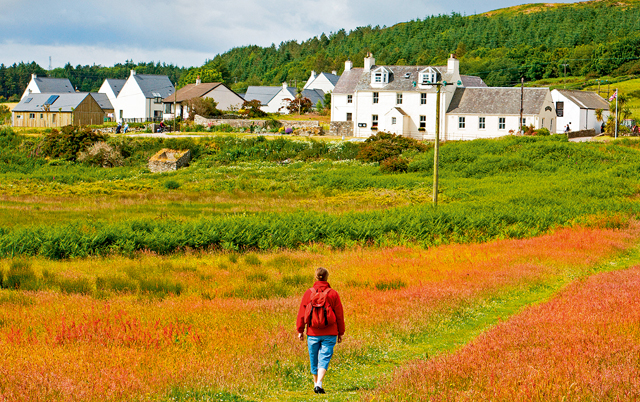Land reform in Scotland: what does it mean?
Holly Kirkwood looks at the issue of land reform in Scotland – the other big question which will occupy people’s minds post referendum


One can’t blame landowners in Scotland, or those considering buying a farm or an estate, for feeling somewhat uncertain of late—and not just because of the looming independence referendum. Land reform is also dominating talk north of the border and this important debate will only intensify post-September— but what are the key points for consideration? Previous land-reform legislation, passed back in 2003, extended the Right to Roam and actively encouraged the Community Right to Buy.
But the present Scottish Government clearly felt that it could go further than this and, as a result, the Land Reform Review Group was tasked with working out how people in Scotland can ‘have a stake in the ownership, governance, management and use of land’ in their country. The group’s final report was published in May and the Government has indicated its intention to legislate on the issue by the end of the current Parliament, in 2016.
With more than 60 recommendations, there is a lot to digest and the Government now has to decide which of these many ideas it wants to bring before the Scottish Parliament. At the time the report was published, Environment Minister Paul Wheelhouse said: ‘I am sure it will contain recommendations we agree with and some we do not, but I welcome the overall vision and proposed direction of travel.’
Indeed, two of the recommendations are already going ahead: Registers of Scotland must produce a comprehensive land register within a decade (itself a Herculean task) and a working group has been tasked with bringing one million acres of land in Scotland under community ownership by 2020, effectively doubling the current amount of publicly owned land.
Some think the recommendations are too tame and others think they’ve gone too far in attempting to punish landowners. David Johnstone, chairman of Scottish Land & Estates, believes there is a danger that the debate could be distorted by sentiment: ‘There is some concern that we get too caught up in issues around land ownership and forget what’s really important, which is getting land management right.’
Looking ahead, there’s an even wider context to consider. As Mr Johnstone points out, we’re also awaiting the outcome of the Review of Agricultural Holdings (which deals with tenants’ right to buy) as well as the detail of the CAP Reform for 2015–2020, which will determine some very important projections for farmers and landowners in the coming five years. Looking further ahead still, of course, another referendum could bring the UK out of Europe altogether. For property buyers, the advice seems to be to ‘try not to get too caught up in crystal-ball gazing’. Evelyn Channing from Savills in Edinburgh says she thinks that potential buyers of sporting estates, and those from overseas in particular, still see Scotland as a safe haven with a fair legal system, regardless of the results of the land-reform review or any forthcoming referenda.
Another important aspect to remember is that, as it stands, these are just recommendations. John Robin Bound of CKD Galbraith explains: ‘There’s certainly an appetite for land reform in Scotland, but it’s one thing drawing up a list of proposals and another thing trying to write sensible, working pieces of legislation. Not so many years back, many thought the world would end in 1976 with the Crofting Reform Act [which gave crofters the right to buy their properties], but the world kept turning and we’re hopeful land reform will be the same.
Sign up for the Country Life Newsletter
Exquisite houses, the beauty of Nature, and how to get the most from your life, straight to your inbox.
‘We’re looking forward to coming out of this uncertain period because we know there will be some very good buying opportunities out there once the dust has settled.’
Need to Know
Some recommendations currently under consideration include:
* The introduction of a new system of land-value taxation * The abolition of the current exemption of agriculture, forestry and other land-based businesses from non-domestic rates * A review of the current exemptions from sporting rates * The creation of an upper limit on the total amount of land in Scotland that can be held by a private landowner or single beneficial interest * The introduction of a conditional right to buy for tenants * The transference of the powers of the Crown Estate to the Scottish Government
-
 Six rural properties with space, charm and endless views, as seen in Country Life
Six rural properties with space, charm and endless views, as seen in Country LifeWe take a look at some of the best houses to come to the market via Country Life in the past week.
By Toby Keel Published
-
 Exploring the countryside is essential for our wellbeing, but Right to Roam is going backwards
Exploring the countryside is essential for our wellbeing, but Right to Roam is going backwardsCampaigners in England often point to Scotland as an example of how brilliantly Right to Roam works, but it's not all it's cracked up to be, says Patrick Galbraith.
By Patrick Galbraith Published
